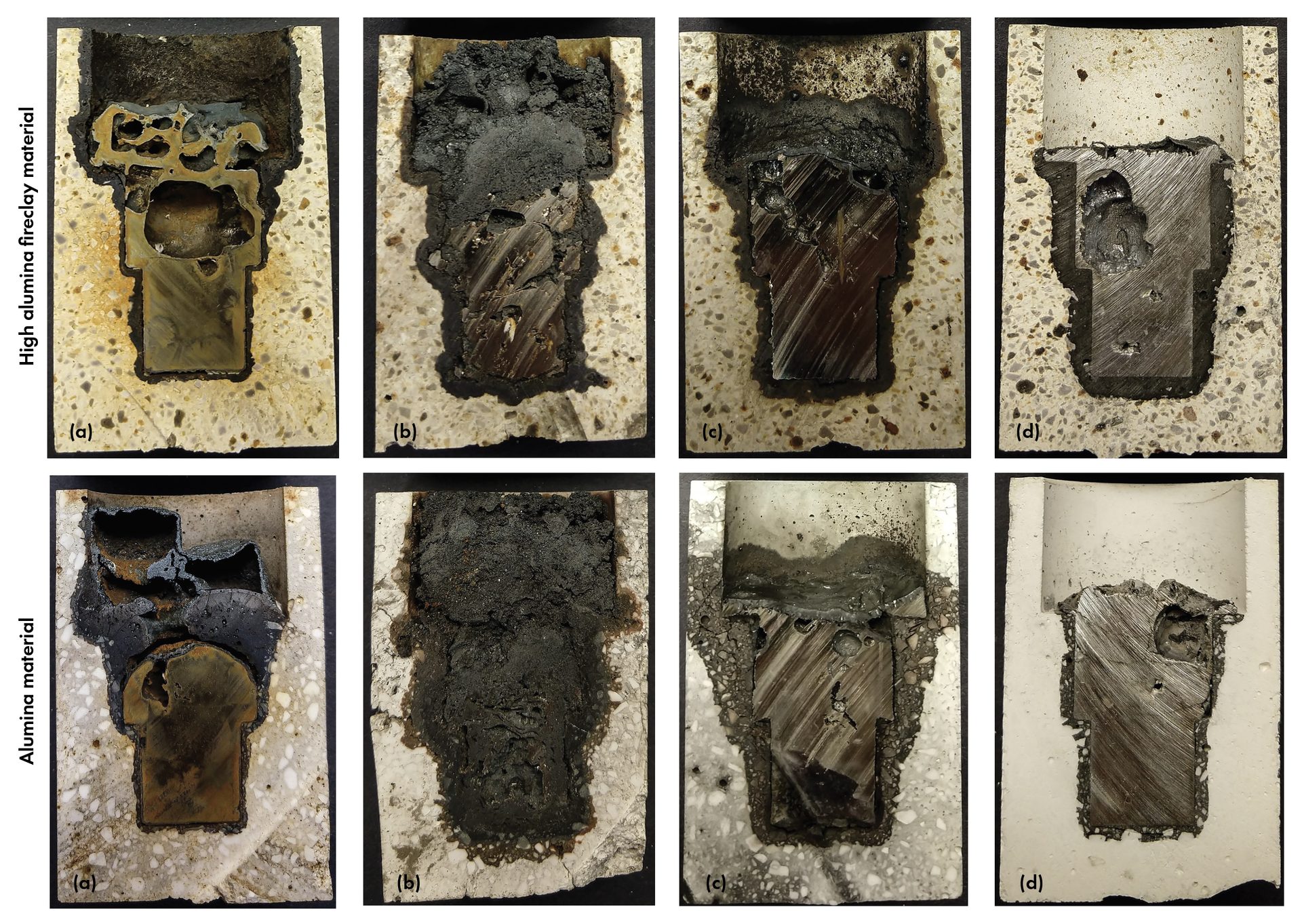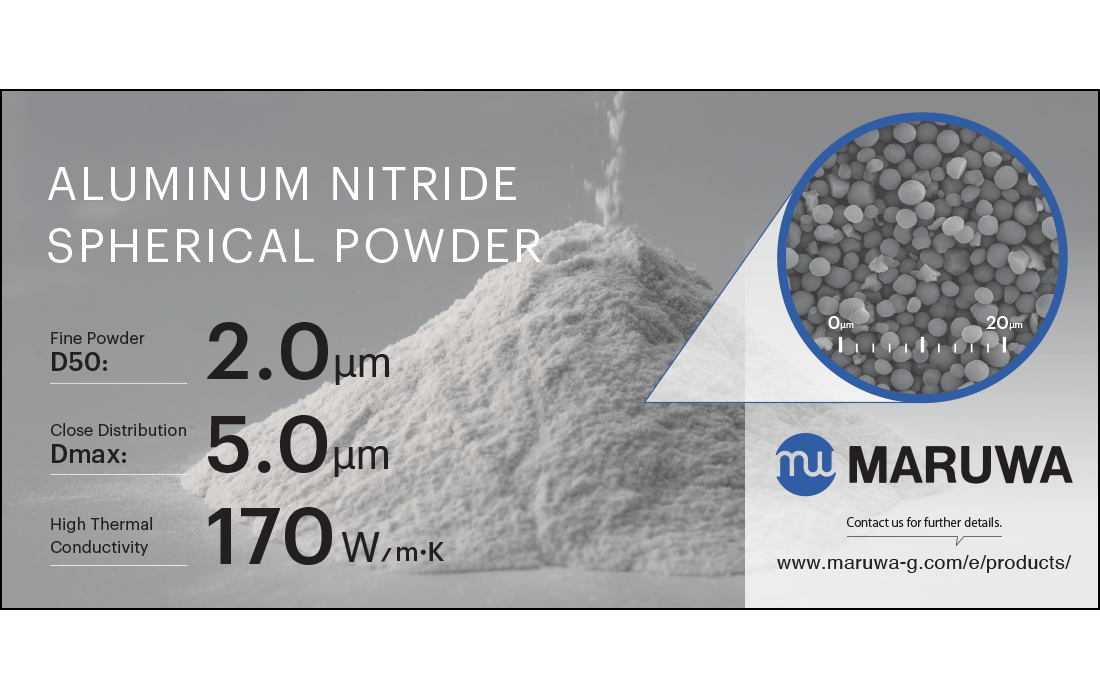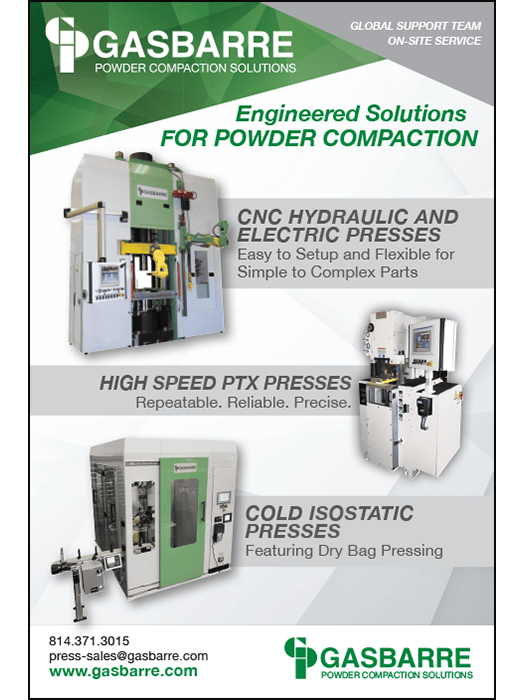Ceramic crucibles:
Market drivers and novel developments in molten metal processing
By Rehan Afzal and Keith J. DeCarlo
bulletin | cover story
High-performance ProCaster ceramic crucibles by Blasch Precision Ceramics. These crucibles are engineered for coreless induction furnaces up to 5,000-pound capacity.
Credit: Blasch Precision Ceramics
A new generation of novel ceramic crucibles meet the performance needs of extreme processing environments while remaining reasonably priced.
While recent metallurgical material developments have led to advanced metals with improved properties, they have also impacted the processing environment. Specifically, when these metals are molten at high temperatures (>1,700°C in some applications), they are more corrosive to the containment equipment than previous compositions.1
Ceramics are the traditional materials used to contain molten metals. The oldest existing examples of crucibles come from the late neolithic and early bronze ages and are made of clay formed into simple cup-like geometries.2 This rudimentary form evolved into the traditional crucible geometry seen today.
Low-cost ceramic materials, such as cordierite or fireclay, used to be the main materials used for molten metal containment. But with the increasingly corrosive and high-temperature environments found in today’s advanced molten metals processing, manufacturers are starting to adopt higher-cost ceramics, such as alumina, zirconia, magnesia, and mullite, that can withstand higher temperatures, more heat cycles, and provide a higher level of corrosion resistance.
However, manufacturing costs are increasing across all industries due to both raw material and labor market trends.3 As a result, customers looking to buy containment equipment for both traditional (e.g., cast iron and steel) and advanced (e.g., lithium alloy) molten metal processing are backing out of sales for the more expensive ceramic products and instead are sourcing lower-performing but less costly products to remain within budgets.
In the future, it is likely that some molten metal processing environments will become even more corrosive and higher temperature. The development and manufacture of lithium alloys for the battery market will be a main driver of this trend, for example, along with other high-performance ferrous and nonferrous alloys. As such, manufacturers will no longer be able to make do with the lower-performing ceramic products. Therefore, it is necessary that a new generation of novel ceramic materials be developed that can meet the performance needs of extreme processing environments while remaining reasonably priced.
ADVERTISEMENT
Meeting the demands of today’s industries: Development of a high-alumina fireclay material
The market for ceramic crucibles is highly demanding because premature failure can result in substantial production issues and monetary losses. Thus, manufacturers require these ceramics to have robust thermal and chemical properties to ensure that processes are maintained with minimal downtime. Some of these processes include, but are not limited to, aerospace casting, automotive casting, die casting, continuous casting, investment casting, atomization, and alloy production.
The ceramic of choice for containment purposes varies depending on the final metal product. Molten metals that are ferrous, nonferrous, acidic, or alkaline come with different containment requirements. Ceramics used in these various cases include alumina, mullite, fused silica, and zirconia, among many others.
Recent advancements in molten metal processing have driven demand for larger and more intricate geometries than traditional cup-shaped crucibles. Traditional crucibles could hold one pound of molten metal, but now there are crucibles that can retain more than 8,000 pounds of molten metal while also sporting unique features, such as spouts or induction heating functionality. Some of these unique design features are difficult to fabricate with traditional slip cast, dry pressing, or even extrusion manufacturing processes. As such, the final price of the ceramic increases and subsequently reduces the customer’s interest.
To improve a crucible’s thermal and chemical properties while keeping cost low, Blasch Precision Ceramics developed a novel super duty high-alumina fireclay material. Because the overall cost of fireclay raw materials is significantly less than alumina, silicon carbide, zirconia, and other higher-cost ceramics, the development of a robust but low-cost novel ceramic material was possible.
Porosity, thermal shock resistance, and three-point bending modulus of rupture are three critical mechanical properties to ensure a customer’s processes do not stall during operation. Through thorough development testing, Blasch Precision Ceramics fine-tuned the novel high-alumina fireclay material to perform better in each of these areas than the competing super duty fireclay bricks currently used in the market.
Furthermore, the Blasch Precision Ceramics’ high-alumina fireclay material demonstrates similar or better corrosion resistance and nonwetting attributes when compared to higher-cost materials for both ferrous and nonferrous metals (Figure 1). Details of the testing process to determine these properties are described in the sidebar, “Internal ‘cup-brick’ testing for corrosion resistance and nonwettability.”
The corrosion resistance and nonwetting attributes, coupled with the ability to form complex geometries, makes the Blasch Precision Ceramics’ high-alumina fireclay material a very attractive candidate for customers that require a robust crucible that can operate in harsh environments at a lower price point.

Figure 1. Corrosion testing of high alumina fireclay and alumina crucibles containing (a) cast iron, (b) 304 stainless steel, (c) 400 nickel, and (d) 6061 aluminum.
Credit: Blasch Precision Ceramics
SIDEBAR
Internal “cup-brick” testing for corrosion resistance and nonwettability
Internal “cup-brick” testing consists of filling a 3 inch x 2 inch x 2 inch ceramic crucible with 15 cm3 of a chosen molten metal alloy. After filling, the samples are fired to a soak temperature above the melting temperature of the metal being tested. The “cup-brick” is held at the respective soak temperature for 20 hours and then allowed to cool to room temperature, after which it is sectioned in half and qualitatively observed for corrosion.
Corrosion is determined based on the interaction between the metallic and the ceramic, seen as the darkened portions along the ceramic–metallic interfaces in Figures 1 and 2. Meanwhile, the ceramic’s nonwetting attributes are demonstrated as the depth of the darkened portions, where a thin line demonstrates good nonwetting attributes and a deep penetration into the bulk ceramic demonstrates metallic wetting.
Application spotlight: Use of ceramics for aluminum–lithium alloy manufacture
The demand for lithium alloys is increasing rapidly with the increasing electrification of everyday life.2 Lithium alloys offer increased energy densities and efficiencies compared to other battery materials, which is what makes them desirable.
Energy storage devices, such as portable electronics, grid-scale energy storage, and now transportation with the forthcoming of electric vehicles, are the primary applications for lithium alloys. The global market for energy storage devices is projected to grow five times larger during the next decade from its current size of approximately $120 billion in 2019.4
Depending on the industry, lithium is alloyed with various other metals to enhance desired properties as well as reduce its reactivity, as lithium is an alkali metal. The aerospace industry specifically uses aluminum–lithium alloys to manufacture structural components for aircraft. In the 1950s, researchers discovered that lithium alloyed with aluminum greatly decreases the density of the aluminum while increasing the elastic modulus.5 So, the use of aluminum–lithium alloys in aircraft can greatly increase the vehicle’s structural rigidity while decreasing its overall weight and improving its fuel efficiency.
Safety is of the utmost importance in the aerospace industry, so there are tight regulations to avoid impurities in the materials used in planes. Vacuum induction furnaces are often used to ensure aluminum–lithium alloy production remains as pure as possible. Additionally, processing the alloy in a vacuum reduces exposure to moisture and air, which prevents unwanted reactions from occurring with the lithium.
But unlike typical induction furnaces, vacuum induction furnaces can complicate the geometries for the ceramic crucibles used within. This situation presents a challenge when considering the ceramic material that is typically used for holding aluminum–lithium alloys during processing.
Lithium-containing alloys are usually highly basic pH, which is problematic for traditional refractory materials (e.g., clays, alumina, mullite, silica) that have low corrosion resistance to basic pH environments. Therefore, magnesia is the refractory of choice due to its high corrosion resistance to basic pH environments.
However, magnesia is hygroscopic, which means it tends to absorb moisture from the environment. This property greatly hinders refractory manufacturers from casting magnesia into different shapes, so magnesia is typically sold as an unshaped refractory that must be environmentally controlled. If magnesia is shaped, it is done so via dry pressing, which limits shape complexity and thus the ability to make an effective magnesia crucible for use in vacuum induction furnaces for aerospace component manufacture.
To create a crucible with corrosion resistance similar to magnesia but with the ability to be formed into complex shapes, researchers have synthesized new materials that contain magnesia as a component with varying success. Least successful are the materials that incorporate magnesia directly rather than as a compound. In this case, magnesia remains hygroscopic, which hinders aqueous casting techniques and therefore storability and complex shape formation.
In contrast, when magnesia is incorporated as magnesia alumina spinel, the final material typically is not hygroscopic, depending on the synthesis technique used and final stoichiometry. So, it can be formed into complex geometries without any specialized storage needs. Furthermore, spinel can exhibit similar basic pH corrosion resistance compared to magnesia, again depending on synthesis technique and final stoichiometry.
Internal testing of a spinel refractory developed by Blasch Precision Ceramics demonstrated the newly developed material has excellent nonwetting attributes. Additionally, internal “cup-brick” corrosion testing (see sidebar for details) showed it demonstrated minimal corrosion against a variety of molten metal alloys compared to an alumina refractory also manufactured by Blasch Precision Ceramics (Figure 2).

Figure 2. Internal “cup-brick” corrosion testing of magnesia alumina spinel and alumina refractory crucibles containing (a) 304 stainless steel, (b) 400 nickel, and (c) 6061 aluminum. 6061 aluminum is an Al–Mg alloy with a relatively basic pH. It is not as basic as Al-Li alloys, but it is a good starting point for corrosion and nonwetting testing of basic pH materials.
Credit: Blasch Precision Ceramics
Besides Blasch Precision Ceramics’ new magnesia alumina spinel, the development of even more ceramic materials that are resistant to basic pH environments, can withstand high temperatures, and can be manufactured into complex shapes will allow industry to expand into even higher-temperature melts and more corrosive alloys. Ultimately, industry will be able to further advance new technologies for aerospace, energy, and defense markets, plus many more.
Conclusions
Crucible technology has rapidly evolved in recent years due the high demand for better performing metals and, subsequently, refractory ceramic products that can improve metallic purity while lasting longer in service. The need for crucibles that can withstand extremely corrosive and high-temperature environments while remaining reasonably priced is a primary driver of the refractory ceramics market today.
Blasch Precision Ceramics is meeting the demand for high-performing and low-cost crucibles with the development of ceramic materials for use in both traditional (e.g., cast iron and steel) and advanced (e.g., aluminum–lithium alloys) molten metal processes. In the former case, Blasch Precision Ceramics’ novel high-alumina fireclay material has costs similar to traditional cordierite and fireclay materials but with the thermal and chemical performance of alumina, mullite, and zirconia materials. In the latter case, Blasch Precision Ceramics’ magnesia alumina spinel circumvents the manufacturing issues with traditional magnesia while demonstrating similar corrosion resistance to basic pH environments.
Processes and technologies that employ crucibles will continue to advance as they have for the past thousands of years. Blasch Precision Ceramics stands ready to help meet the demand as industry evolves to process molten metals in increasingly corrosive and higher-temperature environments.

